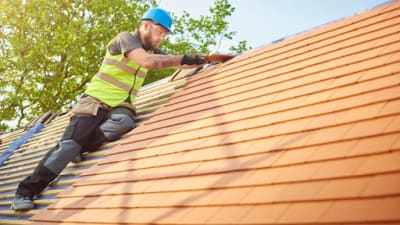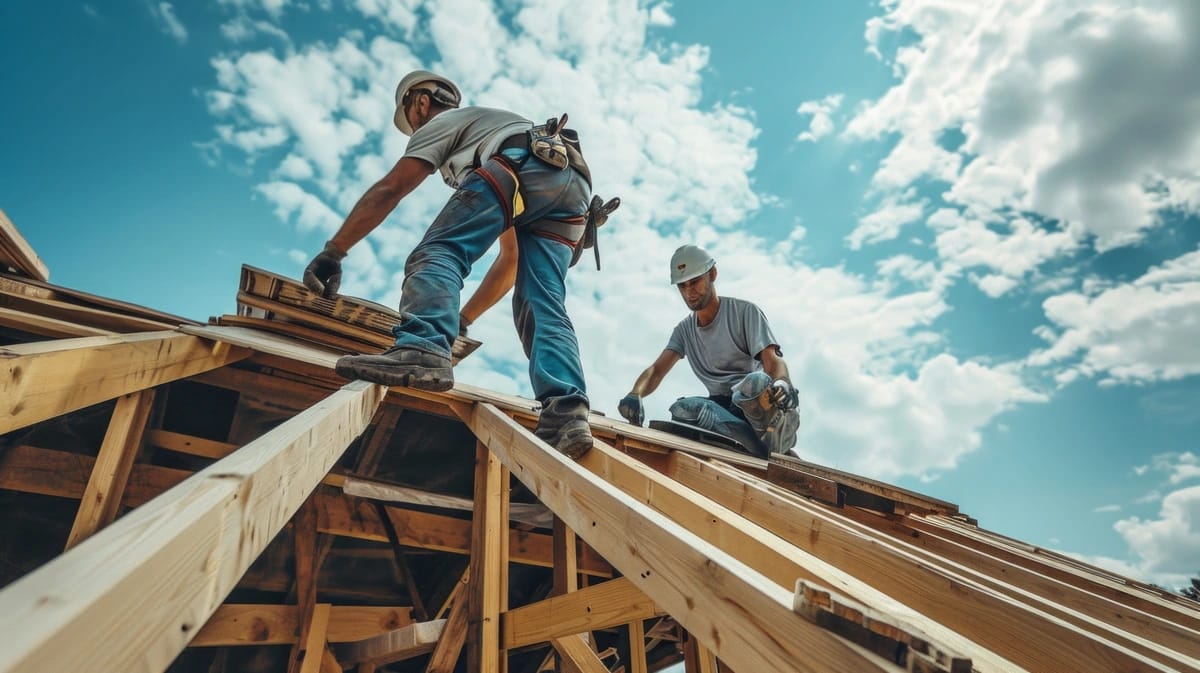Exploring the Various Types of Roofings: Which One Is Best for Your Home?
When considering the myriad sorts of roofs available, it is crucial to evaluate just how each choice aligns with your home's unique requirements, including climate conditions, aesthetic choices, and architectural capability. From the traditional saddleback roof that effectively channels rainwater to the modern level roofing system offering city adaptability, each design provides unique advantages and difficulties. Moreover, the option may substantially influence long-lasting upkeep and power effectiveness. As you contemplate the ideal suitable for your home, it is crucial to weigh these elements meticulously, specifically as some alternatives may shock you with their prospective advantages.
Gable Roofings
Gable roofings, identified by their triangular shape and sloping sides, are a prominent selection amongst house owners looking for both aesthetic appeal and capability. This roof covering style efficiently permits reliable water overflow, decreasing the risk of water merging and subsequent damages. In addition, the high slopes create enough attic room area, which can be used for storage or perhaps exchanged living areas.
Among the main advantages of gable roofs is their ability to hold up against rough weather. The layout helps in reducing wind resistance, making them specifically appropriate for locations susceptible to storms. Additionally, gable roofs can be created making use of a range of materials, consisting of shingles, tiles, and metal, offering homeowners with flexibility in design and spending plan.
From an architectural point of view, gable roof coverings can boost the visual appeal of a home, providing a classic and timeless appearance. Overall, gable roofing systems stay a preferred choice due to their balance of functionality and design, appealing to a large variety of house owners.
Apartment Roofs
While often overlooked in favor of more traditional roof styles, level roofs offer unique advantages that accommodate certain building requirements and contemporary design preferences. These roofs are identified by their marginal pitch, permitting for effective use of space, particularly in urban settings where taking full advantage of square video footage is important.
One significant advantage of level roofing systems is their flexibility. They can be utilized as added home, such as rooftop yards, outdoor patios, or solar panel installations, boosting the functionality of a home. In addition, level roofs are normally much easier and much safer to browse throughout maintenance, promoting repair services and evaluations without the obstacles presented by steep inclines.
Flat roof coverings can likewise be more economical in terms of products and installation. With a less complex design, they usually need less resources, converting into reduced labor prices. Nevertheless, it's crucial to think about water drainage and waterproofing, as flat roof coverings can be prone to merging water if not effectively designed.

Hip Roofing Systems
Hip roofings stand out for their stylish style and architectural integrity, making them a popular option amongst home owners. Characterized by slopes on all four sides, hip roofings give a healthy aesthetic that complements different architectural designs - roof repair oahu. The in proportion nature of these roof coverings aids to distribute weight uniformly, boosting security and durability
One of the essential advantages of hip roofing systems is their capability to stand up to extreme weather. The sloped surface areas promote reliable water drain and snow drainage, lowering the threat of leakages and architectural damage. Furthermore, the style reduces wind resistance, making hip roofing systems less vulnerable to wind uplift compared to various other roof covering kinds.


Shed Roof Coverings
Dropped roofs, unlike the complexity of hip roof coverings, provide a minimal and streamlined layout that interest modern-day looks. Characterized by a solitary sloping surface, dropped roofs are commonly utilized in modern architecture, garden sheds, and various other functional structures. This simpleness not only improves visual charm yet also permits efficient water overflow, making them ideal for various Full Article climates.
One of the main benefits of shed roof coverings is their cost-effectiveness. With less materials required and a simple setup procedure, home owners can conserve both money and time. The design likewise permits the consolidation of big home windows or skylights, advertising all-natural light and developing sizable interiors.
However, it is important to take into consideration the prospective drawbacks, consisting of restricted insulation options and the need for mindful layout to avoid excessive warmth build-up. Additionally, lost roof coverings may not blend effortlessly with typical style, which might be an issue for some house owners.
Eventually, dropped roofings provide a stylish and functional roof covering option for those looking for modernity and efficiency. When choosing a roof type, examining individual functional demands and aesthetic choices will certainly assist house owners to the most effective selection for their special needs.
Mansard Roofings
Mansard roofings, identified by their unique four-sided design, are a hallmark of French style that combines style with functionality. This building style features 2 slopes on each side, with the reduced incline being steeper than the top one. The unique configuration enables for additional space in the upper levels, making it a perfect choice for homeowners seeking to optimize functional area without increasing the building's footprint.
Among the considerable advantages of a mansard roofing system try this web-site is its versatility. It can be adapted to different building styles, from conventional to modern-day, enhancing the aesthetic appeal of any type of home. Additionally, the ample room produced under the roofing can conveniently fit dormer windows, which enable all-natural light and air flow, additional improving the comfort of the living location.
However, prospective property owners must consider the maintenance demands related to mansard roofs. The steep slopes can result in enhanced wear from weather condition direct exposure, requiring routine assessments and fixings. Moreover, installation prices might be higher check this compared to less complex roof covering designs as a result of the complexity of building and construction. Inevitably, a mansard roofing can be an excellent choice for those prioritizing design and space.
Conclusion
Each roofing design offers special benefits, such as the effectiveness of gable roofings, the contemporary allure of shed roof coverings, and the stability of hip roof coverings. Flat roofing systems offer functionality for city environments, while mansard roof coverings give additional living space despite higher setup costs.
From the timeless gable roof that effectively channels rain to the modern flat roofing system offering city versatility, each design offers distinct benefits and difficulties (roof repair oahu). In addition, the design minimizes wind resistance, making hip roof coverings much less vulnerable to wind uplift contrasted to various other roofing system types
Lost roofing systems, in contrast to the complexity of hip roofings, provide a minimalist and streamlined style that appeals to contemporary visual appeals. Each roof design offers distinct benefits, such as the efficiency of gable roofings, the modern appeal of shed roofings, and the security of hip roofings. Level roof coverings supply practicality for urban environments, while mansard roof coverings supply added living space despite higher installment expenses.